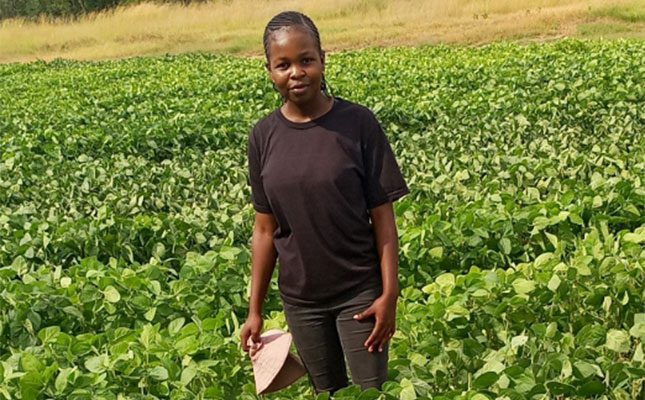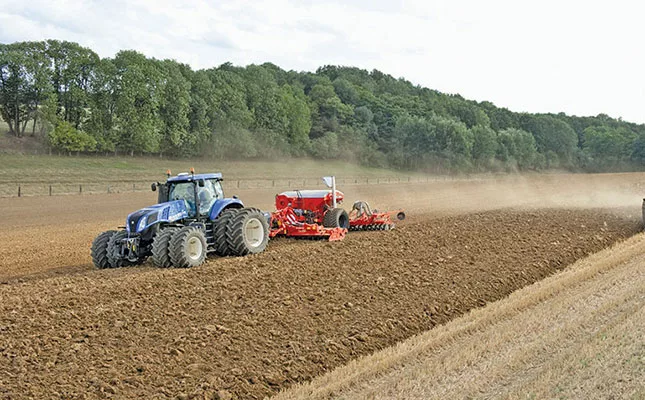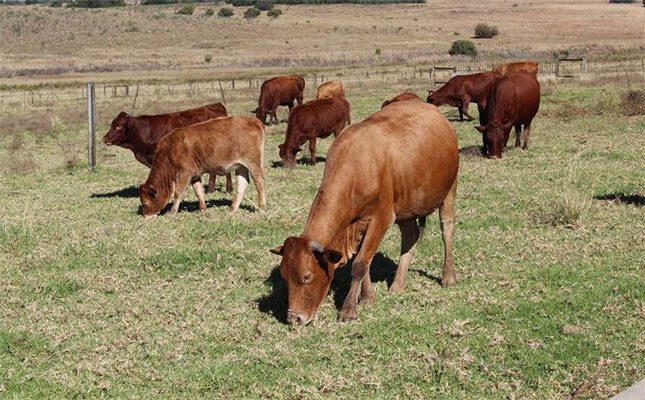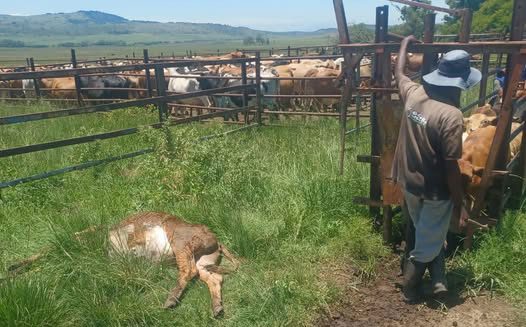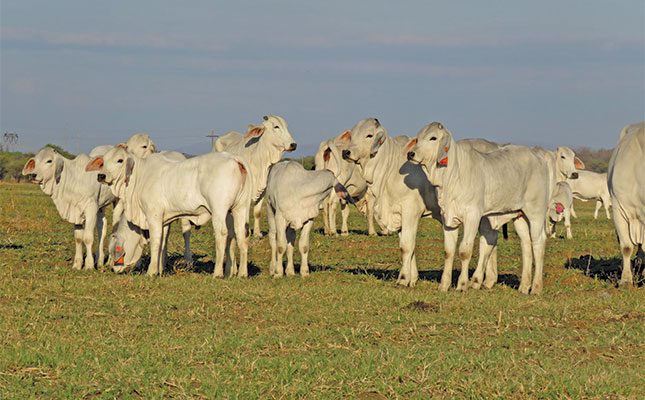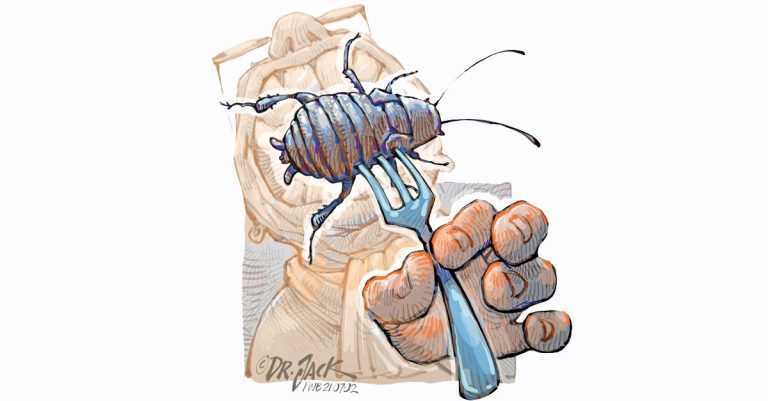
Historically, many cultures in different parts of the world have made insects a part of their diets. According to recent estimates, approximately 2 111 species of insects are consumed in about 140 countries, with entomophagy [the practice of eating insects] documented around the world.
Research shows that 92% of known edible insect species are wild-harvested, 6% are semi-domesticated, and 2% are farmed. Among the known wild-harvested edible insect species, 88% are terrestrial, while the rest are collected from aquatic ecosystems.
With the global population expected to reach 9,7 billion by 2050, concerns are growing over whether the planet’s finite resources such as agricultural land can meet the food needs of so many people. Such food-security concerns are propelling exploration into alternative food sources for humans and animals that are nutritionally sound and can be obtained sustainably.
An alternative food and feed source
Insects are fast emerging as a viable food and feed group, with mass production gaining popularity globally. This can be attributed to the significant nutritional value of insects, as well as the environmental benefits and improvement in livelihoods associated with insect farming.
However, insects might carry biological and chemical contaminants as well as physical hazards that can be detrimental to the health of consumers. These food safety hazards are associated with direct or indirect (via animal feed) consumption of insects.
According to the European Food Safety Authority, the health risks associated with using insects as food for humans and as animal feed depend on the insect species and their substrate, as well as on how the insects are reared, harvested and processed. It should be pointed out, however, that the food safety hazards described below apply to numerous foods and not only to insects.
Unlike other livestock, insects are consumed in their entirety, which necessitates paying close attention to how they are farmed and processed. Insects can accumulate contaminants from their feed or housing materials.
Due to their small size, it can be difficult to decontaminate harvested insects, and any eventual contamination may be carried along the production and processing chain.
The source of edible insects is also an important consideration, as consuming insects reared under controlled and hygienic conditions may pose different food safety concerns to those harvested in the wild. While there are food safety hazards associated with raw or unprocessed insects, it is less likely that humans will eat insects in this state.
In order to create and implement insect species-appropriate hygienic practices for rearing, processing, storing and transporting, it is important to characterise the various food-safety-related hazards in edible insects.
Biological hazards
While pathogenic microbes of insects (entomopathogenic) are considered harmless to humans and animals due to phylogenetic differences, insects can be vectors for various micro-organisms that are detrimental to human and animal health, especially under poorly controlled hygienic conditions.
The risk of transmitting zoonotic infections to humans through edible insects seems low, but this topic requires greater research to clarify the potential risks for food and feed.
The microbiota of insects is complex; rather than being localised in the gut, it occurs on various anatomical parts. This microbiota comprises microbes that are either intrinsically part of an insect’s life cycle or are introduced during farming and processing. With some exceptions, insects are usually consumed in their entirety, as removal of the gut is not always possible.
Bacteria
Several bacterial species have been associated with both farm-reared and wild-caught edible insects. These include bacterial species from the genera Staphylococcus, Streptococcus, Bacillus, Pseudomonas, Micrococcus, Lactobacillus, Erwinia, Clostridium and Acinetobacter, as well as members of the family Enterobacteriaceae.
Certain of these bacteria are not only pathogenic and opportunistic, but can also reduce the shelf life of edible insects.
To reduce the transmission of foodborne pathogens to humans through insect consumption, it is important for insect farms to have strong biosecurity measures in place and prevent contact with livestock animals.
More research is needed to understand the behaviour of foodborne pathogens in edible insects. Feeding experiments with houseflies (Musca domestica) using Escherichia coli O157:H7 show that the ingested bacteria can be found in the intestine, crop and mouthparts of the insects.
The bacteria were found to be excreted for three days post-feeding, which shows that the potential for houseflies to spread the bacteria can be high.
Rearing materials can also determine if there are any potential microbiological risks to consider. For example, if materials such as paper egg cartons are used for rearing insects, there are risks of contamination with Salmonella and Campylobacter.
Contamination of edible insects post-processing is also an area of concern. For instance, edible insects sun-dried in humid areas may be susceptible to microbial growth due to moisture.
Air-drying of insects, where they may come into contact with soil, also poses potential food safety issues. ‘Ready-to-eat’ insects sold to consumers in many parts of the world are generally roasted or fried, steps that are effective in eliminating foodborne pathogens.
However, re-contamination or cross-contamination risks arise if such insects are not hygienically handled or stored before consumption.
The presence of endospore-forming bacteria in edible insects is another major food safety concern, as the heat-resistant spores may withstand the common processing methods adopted for edible insects, such as boiling and deep-frying.
Spore-forming bacteria such as Bacillus cereus sensu stricto, B. cytotoxicus, B. weihenstephanensis and Clostridium thermopalmarium have been found in processed edible yellow mealworms, locusts and house crickets.
Improper cooling after the heat treatment of insects may therefore facilitate the germination of spores that allow B. cereus s. s. to multiply and produce toxins. Other lethal toxin-producing, spore-forming bacteria such as C. sordellii have also been identified in edible insects.
Viruses
So far, the risks associated with contracting foodborne viruses, such as hepatitis A and E and norovirus, through the consumption of edible insects, are low, but care must be taken not to introduce the viruses in insect-production units through substrates. Insects can potentially serve as replicative vectors for viruses that infect vertebrates.
Additional studies are needed to investigate the possible occurrence and transmission of arthropod-borne arboviruses, which can cause a number of human diseases such as West Nile virus and haemorrhagic fever, through edible insects.
The views expressed in our weekly opinion piece do not necessarily reflect those of Farmer’s Weekly.
This article is an edited excerpt from a report titled ‘Looking at edible insects from a food safety perspective: Challenges and opportunities for the sector’, published by the Food and Agriculture Organization of the United Nations in 2021.

